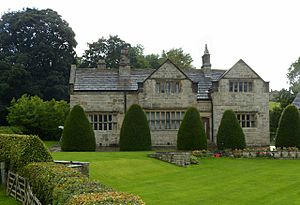John Yorke (1685–1757) facts for kids
John Yorke (born in 1685, died in 1757) was an important English politician. He came from Gouthwaite Hall and Richmond in Yorkshire. John Yorke was a member of the Whig political party. He served in the British Parliament, known as the House of Commons, for many years between 1710 and 1757.
Contents
Early Life and Education
John Yorke was born in 1685. His father was Thomas Yorke, who was also a Member of Parliament (MP) for Richmond. His mother was Katherine Lister.
John went to two well-known schools. First, he studied at Eton College. Later, he attended Peterhouse, which is a college at Cambridge University.
A Career in Politics
John Yorke followed in his father's footsteps and became a politician. He was first elected as a Member of Parliament (MP) for the Richmond area in 1710. He was part of the Whig party.
During his time as an MP, he didn't speak much. However, he did vote against a bill about trade with France in 1713. In the election of 1713, he stepped aside for his father. His father thought the election would be very difficult.
Returning to Parliament
After his father passed away in 1716, John Yorke was elected again as an MP for Richmond in 1717. He continued to serve as an independent Whig. This meant he was part of the Whig party but made his own decisions.
In the 1727 election, John Yorke lost his seat. But he didn't give up! He asked the House of Lords to review the election results. The House of Lords decided he was the rightful winner in 1728. He then kept his seat in Parliament until he died.
Family and Home
When his father died, John Yorke inherited the family's large estates. These included lands in Nidderdale and Richmond.
In 1732, John Yorke got married to Anne Darcy. Her father, James Darcy, had also been an MP for Richmond. He had even served alongside John's father.
Later Life and Legacy
John Yorke passed away in 1757. He did not have any children. He was buried in the church in Richmond.
The family's main home, Gouthwaite Hall, was in Nidderdale. Later, this area was flooded to create Gouthwaite Reservoir. However, a new Gouthwaite Hall was built before the flooding. Materials from the old house were used to build the new one.


